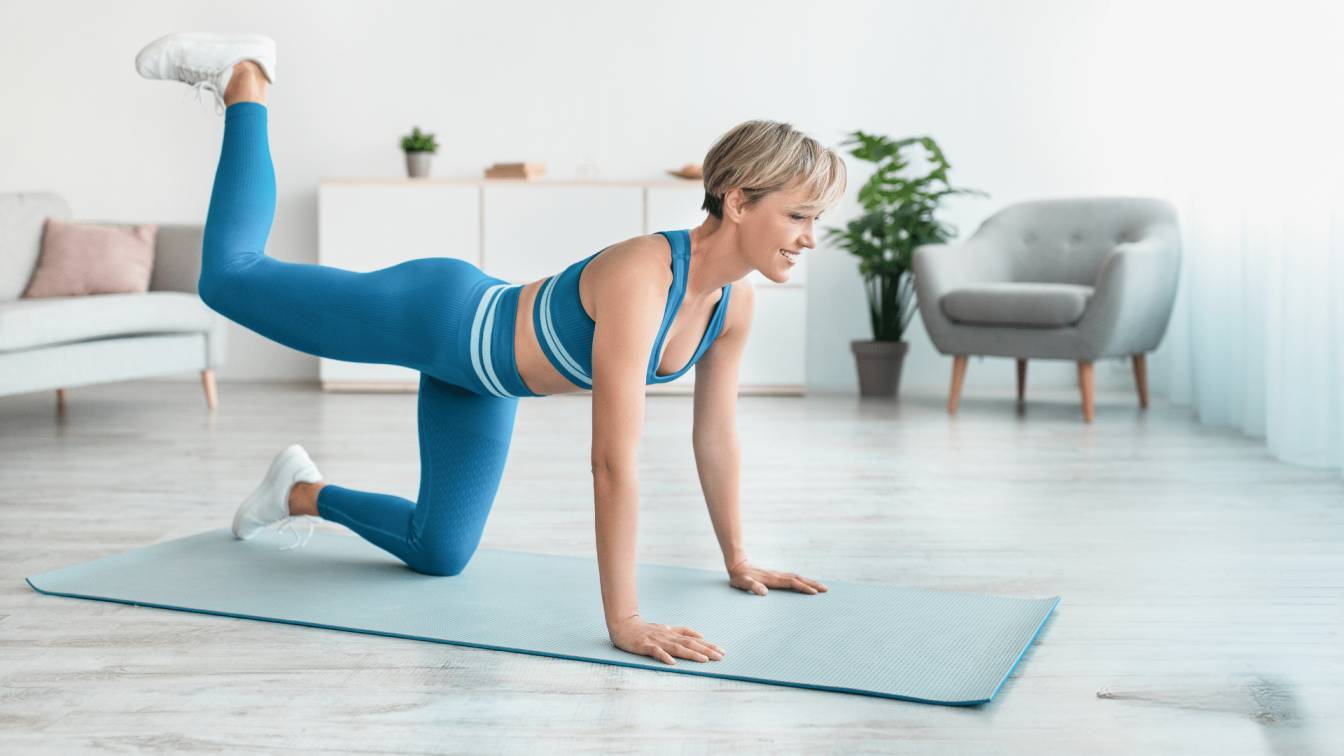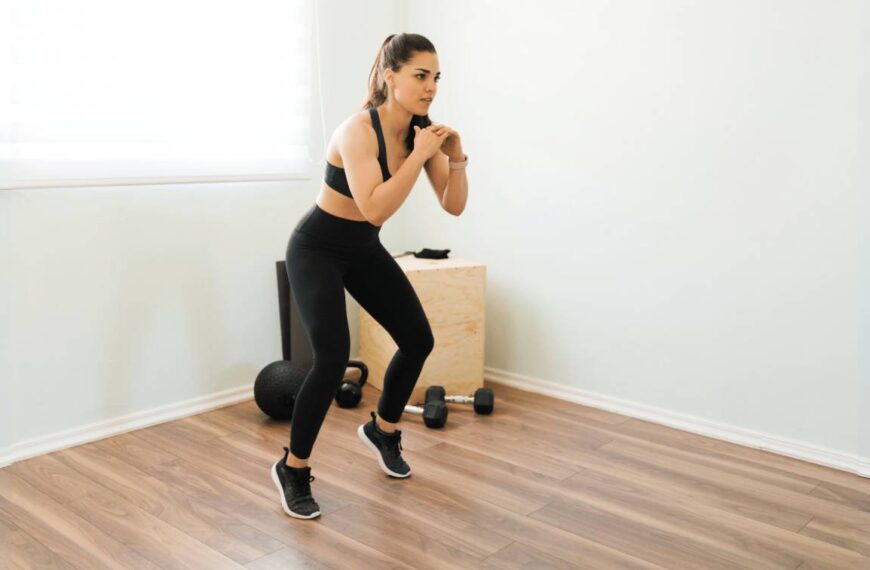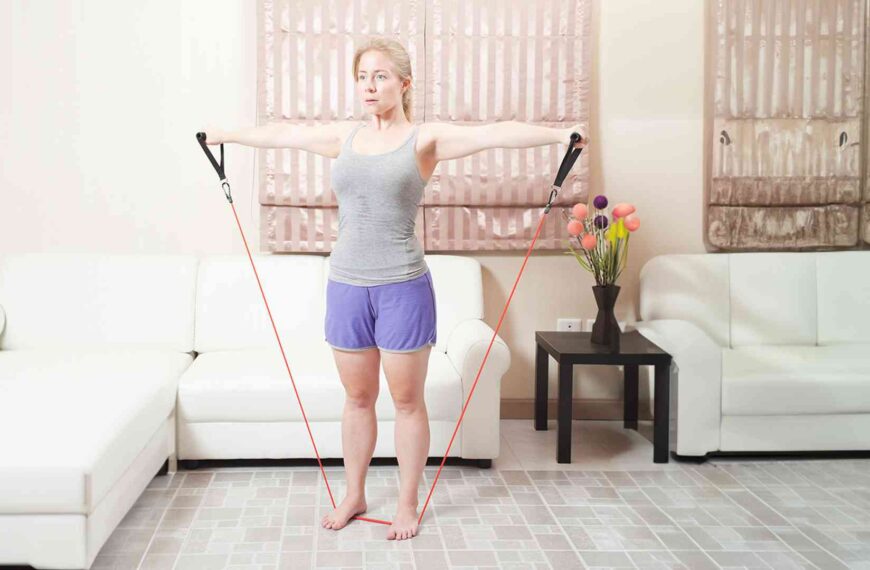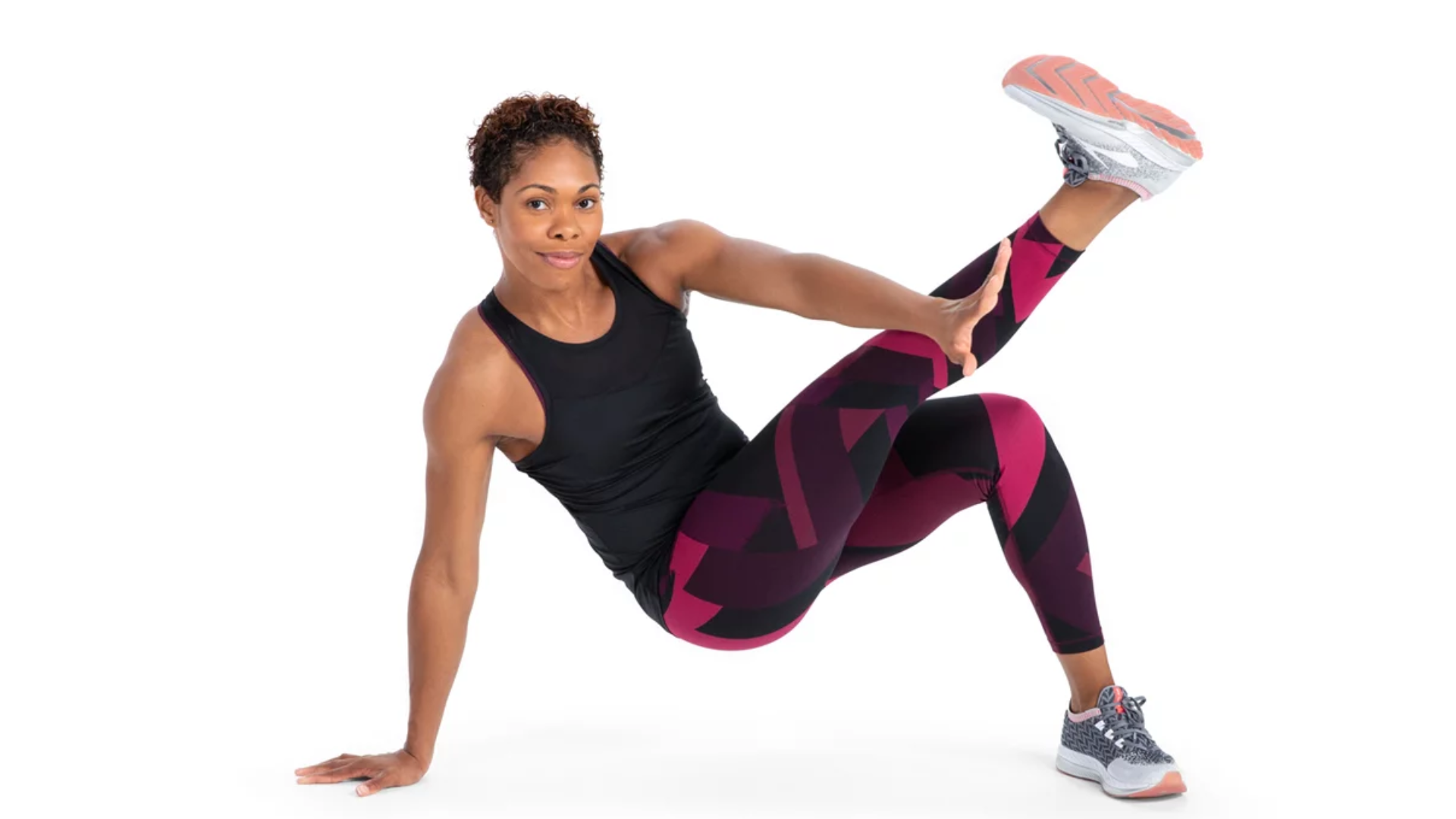If you’re looking to tone and sculpt your glute muscles, banded glute kickbacks exercise is a fantastic option. This targeted exercise effectively engages your glutes and can help you achieve your dream buttocks. In this complete guide, we will explore the benefits of banded glute kickbacks, the equipment needed, how to do the exercise correctly, variations to keep your workouts interesting, alternatives for a comprehensive glute workout, tips for maximizing results, and how to incorporate this exercise into your workout routine. So let’s dive in and get those glutes working!
Using Merlin app for real-time feedback
To ensure proper form and technique during your banded glute kickbacks exercise, consider using the Merlin app. Merlin is a fitness mobile app with a virtual personal trainer that provides real-time feedback on your form and posture. With Merlin, you can receive instant cues and corrections to help you perform the exercise correctly and maximize your results. The app also offers personalized tips and guidance based on your fitness level and goals, making it an invaluable tool for your fitness journey.
Benefits of Doing Banded Glute Kickbacks Exercise
A. Tones and sculpts glute muscles
One of the primary benefits of banded glute kickbacks exercise is its ability to tone and sculpt your glute muscles. By specifically targeting the gluteus maximus, gluteus medius, and gluteus minimus, this exercise helps you build a rounder, firmer, and more lifted butt. By incorporating banded glute kickbacks into your fitness routine, you can achieve the well-defined glutes you’ve always wanted.
B. Improves core stability and balance
In addition to toning your glutes, banded glute kickbacks exercise also helps improve core stability and balance. The movement involved in this exercise engages your core muscles, including your abdominal muscles and lower back muscles. This engagement not only enhances your overall balance but also strengthens your core, leading to better posture and reduced risk of back pain.
C. Enhances overall lower body strength
Band glute kickback exercise primarily targets the glute muscles, but it also engages other lower body muscles, including the hamstrings and quadriceps. By consistently incorporating this exercise into your workout routine, you can strengthen your entire lower body, leading to improved athletic performance and functional movements in your daily life.
D. Increases flexibility and range of motion
Another benefit of banded glute kickbacks exercise is its ability to increase flexibility and range of motion in your hips and glutes. As you perform the kickback motion, you stretch and activate the muscles in your hip joint, which can help improve your overall flexibility and mobility. This increased range of motion can be beneficial for activities such as running, dancing, or even everyday movements like bending and squatting.
Now that we’ve explored the benefits of banded glute kickbacks exercise, let’s discuss the equipment you’ll need to get started.
Benefits of Doing Banded Glute Kickbacks Exercise
- Tones and sculpts glute muscles
- Improves core stability and balance
- Enhances overall lower body strength
- Increases flexibility and range of motion
Equipment Needed for Banded Glute Kickbacks Exercise
- Resistance band
- Mat
- Comfortable clothing
How to Do Banded Glute Kickbacks Exercise Correctly
- Proper form and technique
- Breathing techniques
- Common mistakes to avoid
- Using Merlin app for real-time feedback
Equipment Needed for Banded Glute Kickbacks Exercise
To perform banded glute kickbacks, you’ll need a few essential pieces of equipment. Here’s what you’ll need:
A. Resistance band
The star of the show is the resistance band. This simple yet effective piece of equipment adds constant resistance to your glute kickbacks, making the exercise more challenging and beneficial. Resistance bands come in various levels of resistance, so it’s essential to choose one that suits your fitness level and goals. If you’re new to banded glute kickbacks, start with a lighter resistance band and gradually work your way up to higher resistance levels as you get stronger.
B. Mat
While not necessary, having a mat can provide comfort and support for your hands and knees during the exercise. A mat also helps prevent slipping on smooth surfaces and provides a clean and dedicated space for your workout.
C. Comfortable clothing
When performing banded glute kickbacks exercise, it’s crucial to wear comfortable clothing that allows for a full range of motion. Opt for workout attire that is breathable, stretchy, and non-restrictive. This will ensure that you can move freely and perform the exercise with proper form.
With the right equipment in hand, let’s move on to the proper technique for performing banded glute kickbacks.
VIDEO
How to Do Banded Glute Kickbacks Exercise Correctly
To get the most out of your banded glute kickbacks exercise, it’s crucial to maintain proper form and technique. Here’s a step-by-step guide to help you perform the exercise correctly:
A. Proper form and technique
- Start by positioning yourself on the ground on all fours. Place your hands directly below your shoulders and your knees directly below your hips.
- Engage your core muscles by bracing them as if someone is about to punch you in the stomach.
- Keeping your back flat and your core engaged, lift one leg and position the resistance band around the arch of your foot. The band should be secure and provide tension when stretched.
- With your leg extended, kick it backward while keeping it straight. Focus on squeezing your glutes at the top of the movement.
- Slowly return your leg to the starting position, maintaining control throughout the entire range of motion.
- Complete the desired number of repetitions with one leg before switching to the other leg.
B. Breathing techniques
Breathing correctly during banded glute kickbacks exercise can help you maintain proper form and maximize the effectiveness of the exercise. As you kick your leg back, exhale and contract your glutes. Inhale as you return your leg to the starting position. Remember to breathe consistently and avoid holding your breath, as this can lead to unnecessary tension in your body.
C. Common mistakes to avoid
To ensure you’re getting the most out of your banded glute kickbacks exercise, it’s essential to avoid common mistakes that can compromise your form and reduce the effectiveness of the exercise. Here are a few mistakes to be aware of:
- Arching your back: Keep your back flat throughout the exercise to avoid excessive strain on your lower back. Engaging your core muscles will help maintain a stable and neutral spine.
- Lifting your leg too high: While it may be tempting to kick your leg as high as possible, focus on the quality of the movement rather than the height. Aim for a controlled and smooth motion, emphasizing the contraction of your glutes.
- Allowing the resistance band to slack: Ensure that the resistance band remains taut throughout the exercise. This constant tension is what makes banded glute kickbacks so effective. If the band becomes slack, adjust it to maintain resistance.
Variations of Banded Glute Kickbacks Exercise
While the traditional banded glute kickbacks exercise is highly effective, incorporating variations into your routine can help target different areas of your glutes and add variety to your workouts. Here are a few variations you can try:
A. Bent-knee kickbacks
Bent-knee kickbacks are a variation of banded glute kickbacks that specifically target the gluteus maximus. To perform this variation, follow the same steps as the traditional banded glute kickbacks but keep your knee bent at a 90-degree angle throughout the movement. This variation places more emphasis on the gluteus maximus and can provide an intense glute workout.
B. Side-lying kickbacks
Side-lying kickbacks are another variation that targets the gluteus medius and gluteus minimus. Lie on your side with your legs stacked, and place the resistance band around your ankles. Lift your top leg while keeping it straight and kick it backward, focusing on squeezing your glutes at the top of the movement. This variation helps strengthen the side glutes and can contribute to a more balanced and sculpted butt.
C. Standing kickbacks
If you’re looking to add some stability and balance challenges to your glute workout, try standing kickbacks. Stand upright with the resistance band around your ankles. Kick one leg backward, keeping it straight and squeezing your glutes. This variation requires more core stability and engages additional muscles in your lower body, including your quadriceps and hamstrings.
D. Benefits of each variation
Incorporating variations of banded glute kickbacks into your workout routine can help target different areas of your glutes and add diversity to your training. By focusing on specific glute muscles, you can achieve a well-rounded and balanced butt. It’s recommended to include a mix of variations in your routine to challenge your muscles in different ways and prevent plateaus.
Now that we’ve explored variations of banded glute kickbacks exercise, let’s discuss some alternatives you can incorporate into your glute workouts.
Alternatives to Banded Glute Kickbacks Exercise for Glute Workout
While banded glute kickbacks exercise is highly effective, it’s essential to have a variety of exercises in your glute workout routine. Here are a few alternatives that target the glutes and can be combined with banded glute kickbacks for a comprehensive glute workout:
A. Hip thrusts
Hip thrusts are a popular exercise for targeting the glutes. This exercise involves lying on your back with your knees bent and lifting your hips upward, squeezing your glutes at the top. Hip thrusts can be performed with a barbell, dumbbells, or just body weight. Adding hip thrusts to your routine can provide a well-rounded glute workout and help you achieve maximum glute activation.
B. Squats
Squats are a compound exercise that targets multiple muscle groups, including the glutes. When performed correctly, squats engage your glutes, quadriceps, hamstrings, and core. To target the glutes specifically, focus on sitting back into your heels and squeezing your glutes at the top of the movement. Squats can be performed with just body weight, or you can add resistance by using a barbell or dumbbells.
C. Deadlifts
Deadlifts primarily target the hamstrings and lower back, but they also engage the glutes. This compound exercise involves lifting a weight from the floor while maintaining proper form and technique. Deadlifts can be performed with a barbell, dumbbells, or kettlebells. Adding deadlifts to your glute workout routine can help strengthen your posterior chain and contribute to overall lower body strength.
D. Lunges
Lunges are another excellent exercise for targeting the glutes and other lower body muscles. They can be performed in various directions, such as forward lunges, reverse lunges, or lateral lunges. Lunges engage your glutes, quadriceps, hamstrings, and calves. To maximize glute activation, focus on pushing through your front heel and squeezing your glutes at the top of the movement.
Answers To Common Questions
What is the banded glute kickbacks exercise?
Banded glute kickbacks are a targeted glute exercise using resistance bands.
Who can benefit from banded glute kickbacks?
Anyone looking to strengthen and tone their glutes can benefit from this exercise.
How do I perform banded glute kickbacks correctly?
Wrap a resistance band around your ankles, then kick one leg back while keeping it straight. Repeat with the other leg.
What equipment do I need for banded glute kickbacks?
You’ll need a resistance band and a comfortable space to perform the exercise.
Can banded glute kickbacks be modified for beginners?
Yes, beginners can start with lighter resistance bands or perform the exercise without a band for less resistance.
Isn’t banded glute kickbacks just for women?
No, banded glute kickbacks can benefit both men and women by strengthening the glute muscles.






